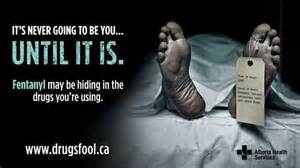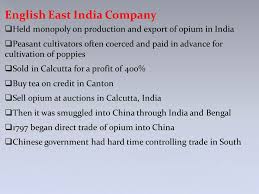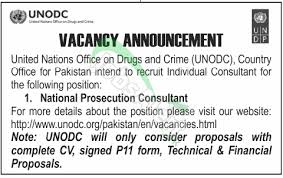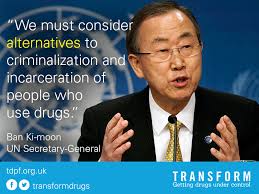1961: Naloxone was first cited by Jack Fishman and researched by Harold Blumberg in 1961. The synthesis stated that although naloxone was not the first and only opioid antagonist it was however the first that did not produce analgesic qualities. The synthesis also explained other qualities of naloxone stating that it was indeed a medical breakthrough with regards to the reversal of respiratory depression in all synthetic and natural opioid related substances. It was also useful in coma situations where the cause was of unknown origin to eliminate whether there was opioid presence that had induced the coma like state. It was used on new born babies following the administration of opioid related medication to mothers during pregnancy. Nalorphine preceded Naloxone but after further research was found to cause analgesia and in higher doses hallucinations. Naloxone was found to be the ideal balance between agonist and antagonist and prove to be the only pure agonist which made it the more effective and preferred of all previous researched chemicals.
1962: The previous mentioned document was an abstract in Federation proceedings and the first full report was later released by a group working for Sankyo company in Japan in the Science citation index. Sankyo applied for the British patent for Naloxone in March 1962 and it was awarded in October 1963. The early delays in patent were attributed to the fact that Naloxone was of more interest in the academic field than it was in the commercial one in the earlier years of it’s beginnings. Also at this time the main interest of researchers and scientists was to research and produce analgesics.
1966: Blumberg released a full paper on the qualities and uses of Naloxone which was later to become the centre of the field of endogenous opioids where Naloxone became one of the key components and was heavily relied on for its qualities. Throughout the early 1970’s both Fishman and Blumberg’s research and related work on and around Naloxone focused primarily on the clinical applications of the medicine as did most of those involved in the researching and practice of medical compounds.
1971: The FDA (Food and Drug Administration) in the USA licenced Naloxone stating that access to naloxone would require a prescription from an authorized health care provider. Some physicians were reluctant to prescribe the medication to suspected opioid-misusing patients. At least one legal analysis, by Burris et al, concluded that health care providers ”do not act outside state and federal regulations in prescribing naloxone to their at-risk patients and the risks of liability are low and commensurate with those generally associated with providing health care” The Good Samaritan laws in a number of states in America provides legal protection to physicians for prescribing the medication and also to those in the community carrying and administering the medication.
1973: A patent was issued in 1973 for an analgesic combination which comprised of an orally inactive dose of naloxone and an orally active strong analgesic. Naloxone was also found to reduce obesity in further studies on animals, this research is still ongoing to date. Towards the end of the 1970’s the importance of Naloxone as one of the most relevant medicinal breakthroughs in the research of endogenous opioids and further qualities within the medical world was beginning to gain recognition.
1982: Jack Fishman and Harold Blumberg were awarded the John Scott award for their synthesis and investigations on Naloxone. The John Scott award is awarded to those most deserving for inventions that contribute to the ”comfort, welfare and happiness of mankind” John Scott was a pharmacist in Edinburgh, Scotland whose interest were in awarding ”ingenious men or women who make useful inventions” Other individuals who were awarded the John Scott Award included Marie Curie, Thomas Edison and the Wright Brothers.
1996: Professor John Strang made a proposal for Take Home Naloxone via report in the British Medical Journal (BMJ). This report stated the case for community Naloxone and went on to say.…
Home based supplies of naloxone would save lives.
Non-fatal overdose is an occupational risk of heroin misuse1 and fatal overdose is a common cause of premature death in heroin users.2 3 4 One of the major contributors to a fatal outcome is the inadequacy of heroin users’ responses to the overdoses of their peers. They may delay calling an ambulance for fear of the police arriving, and their efforts to revive comatose users are often ineffective. The distribution of naloxone to opiate users was first mooted in 19925 as an intervention that would be life saving in such situations.6 With a rising toll of deaths from heroin overdose it is time to take the suggestion seriously.
This study also concluded that at least 80% of those in an overdose situations were witnessed by peers. This posed the question as to why so many fatalities were found alone and on further investigation it revealed that there was even more reason to further investigate and promote the need for community provision of naloxone distribution by peers and significant others .
1996 also saw pilot programs started in 15 American states and the district of Columbia. All results from these pilots were positive. Chicago Recovery Alliance became one of the first providers of Naloxone to peers and the first Take Home Naloxone program went live in the USA. In the following link Dan Bigg talks about this groundbreaking achievment…. http://harmreduction.org/issues/overdose-prevention/tools-best-practices/naloxone-program-case-studies/chicago-recovery-alliance/
1998: Other areas that followed suit with initiating THN programs were Bologna, Padua and Turin in Italy and Jersey in the UK pioneering peer led take home Naloxone programs.
1999: Australian studies found that Naloxone provision was ”not only feasible but acceptable in the community with regards to the target population” The report eventually materialised in December of 2011 in the form of the ACT program…. http://www.atoda.org.au/policy/naloxone/
2000: The ACMD (Advisory Council of Misuse of Drugs) released a report entitled ”Reducing drug related deaths” This document recommended further exploration of the efficacy of Take Home Naloxone programs. This report stated that ”Attempts are needed actively to involve drug users themselves in responsibility for reducing drug-related deaths” The full report can be read here… http://www.drugsandalcohol.ie/5017/1/Home_Office_Reducing_drug_related_deaths_2000.pdf
This year also saw the release of a report from Australia stating that based on the earlier studies in 1999 the ‘feasibility’ of the THN program had met with substantial legal challenges.
2001: San Fransisco and New Mexico began ‘distributing naloxone hydrochloride to heroin users as a simple, inexpensive measure with the potential to reduce mortality from heroin overdose’ There were again legal aspects that caused restrictive supply due to the ‘uncertainty about its legality or the risk of malpractice suits’ Naloxone was seen as a politically charged topic. This fear and uncertainty slowed the process of further provision in other states and around the world. Despite the evidence already being insurmountable as to it’s effectiveness as a life saving medication…. http://www.fixpunkt-berlin.de/fileadmin/user_upload/PDF/Notfall/Artikel_burris_naloxone.pdf.
This year also saw the the beginning of a Take Home Naloxone program in the UK in South London. The original Chicago program became the trusted format for Take Home Naloxone programs globally.
2002: This year saw the first ever reports of lives saved through the community provision of Naloxone and was reported in the BMJ (British Medical Journal) by Chicago Recovery Alliance. This report stated that there had been 52 successful reversals to date since the inception of their take home Naloxone program…. http://www.bmj.com/rapid-response/2011/10/28/chicago-experience-take-away-naloxone
2003: A report was released which has been cited in numerous other publications stating that the high risk period following release from prison, more prominently among females needed to be addressed and looked at with regards to naloxone being provided to those leaving the prison population. The first two weeks following release from this environment are particularly high risk with regards to overdose being prevalent for obvious reasons, tolerance, etc. Further studies took the research into the 12 week period where the findings can be found here…. http://www.ncbi.nlm.nih.gov/pmc/articles/PMC2955973/#b22
Also in 2003 there was a further report aimed at the community use of naloxone. This report was aimed at highlighting the reports of risk of overdose following administration of naloxone. The results of this study, which included 998 case studies, showed that after a period of 12 hours following naloxone being given in the field, and further support being refused there were no listed fatalities. This challenged the commonly used reasoning against community provision of the risk of overdose after naloxone wears off, 20 minutes later. 12 hours allowed for this short acting period, and also for the fact that after being administered naloxone the withdrawals would require redosing of opioid for relief. This report was reviewed by dates, times, age, sex, location, and ethnicity when available.
2005: The first report on THN programs was released in USA showing that there was unsurmountable evidence to support the program. The pilot study was carried out in 2001 and released here in 2005. http://www.ncbi.nlm.nih.gov/pubmed/15872192
This year also saw the UK law changed to permit the the use of naloxone by any member of the general public for the purpose of saving a life. http://www.naloxone.org.uk/index.php/lawpolicy/law/uklaw1
2007: The 2007 UK Clinical Guidelines supported the use of naloxone as a means of preventing fatal overdoses and reducing drug related fatalities.
This year also saw the NTA (National Treatment Agency) initiate training for families, carers and users following a survey that identified the need for take home programs to reduce the fatalities.
2008: Both the USA and the UK released an impact paper showing the effectiveness of training in overdose awareness and Naoxone administration to families, carers and users. This showed the potential positive impact that Naloxone in the community could and indeed was having. http://www.biomedcentral.com/content/pdf/1477-7517-4-3.pdf?origin=publication_detail The release of this report highlighted a number of potential barriers including. Political climate and prescription laws.
The MRC (Medical Research Council) approved the N-Alive program. This was a randomised controlled trial aimed at research within the prison community. http://www.kcl.ac.uk/ioppn/depts/addictions/research/drugs/N-ALIVE.aspx fronted up by Professor John Strang, (This is still ongoing, The randomised trial period ended in December 2014 and the follow up of those involved in the trial will commence in March, 2015) Results from a similar study can be found back in 2003, follow the link to NCBI (National Centre for Biotechnology Information)
2009: In 2009 the NTA (National Treatment Agency) funded 16 pilot trials all over England. These pilots set out to train the carers and significant others in all matters relating to Naloxone. Information on the product, basic life support and overdose awareness, including administration. Overall the project was found to promote the reduction of fatalities induced by opioid related overdose. There was difficulty and resistance reported in finding individuals to train but 495 carers were trained and evidence relating to the training showed that, in reality, the training would be better served in a peer to peer environment.
This was also the year that Wales launched it’s first pilot program as well…. http://wales.gov.uk/statistics-and-research/evaluation-take-home-naloxone-demonstration-project/?lang=en The full data and evaluation report around the 34 areas where this spanned out to can be found here in a report stored on the Welsh Harm Reduction database…. http://www.wales.nhs.uk/sites3/documents/457/Naloxone%20report%202013%20FINAL.pdf 2130 kits were issued between 2009 and 2013 the full statistical data has been reproduced in the report.
2010: Scotland launched the National Naloxone program. This progress started in 1996 when the BMJ (British Medical Journal) proposal by Prof John Strang was released, see earlier comments from 1996. This move followed a number of pilot schemes and the end result was that pre-filled syringes of naloxone are now provided to everyone considered at risk of overdose, this is after comprehensive training is given. The lord advocate endorsed the program and the National program is fully funded by the Scottish government. The Lord Advocate guidelines can be found here…. http://sdf.org.uk/sdf/files/LordAdvocatesGuidelines.pdf There are numerous reports from Scotland around the provision of Naloxone and the success of the National program. NHS Highlands also now provide nasal naloxone as well as the prefilled syringe.
2011: The Assembly Government in Wales announced their plans to make take-home naloxone available alongside training. This decision followed the evaluation report that was submitted which is here…. http://wales.gov.uk/statistics-and-research/evaluation-take-home-naloxone-demonstration-project/?lang=en
2012: The CDC (Centre for Disease Control and Prevention) and the FDA (Food and Drug Administration) hosted a workshop that hosted a large number of presentations including topics such as populations at risk, public health interventions, criminal overview, ethical and regulatory considerations, expanded considerations, and lots more. The full details and presentations an be found here…. http://www.fda.gov/Drugs/NewsEvents/ucm277119.htm
The UNDOC resolution 55/7 clearly recognised that the high number of opioid related deaths demanded immediate assessment and action, this statement was based on the world drug report 2011, https://www.unodc.org/unodc/en/data-and-analysis/WDR-2011.html This report clearly stated that opioid overdose treatment, ”including the provision of opioid receptor antagonists such as naloxone, is part of a comprehensive approach to services for drug users and can reverse the effects of opioids and prevent mortality” This report also recognised that there were a number of public health inequalities that also contributed to addictions and overdose including, polyuse, mental health, etc. The full resolution can be read here…. https://www.unodc.org/documents/commissions/CND/Drug_Resolutions/2010-2019/2012/CND_Res-55-7.pdf
The N-ALive (NAloxone InVEstigation) trial went live. A full understanding of the content of this investigation and the different stages which include the pilot trial and then the full trial, the reasons the trial was randomised and how the final results will be used can be found here…. http://www.kcl.ac.uk/ioppn/depts/addictions/research/drugs/N-ALIVE.aspx As stated earlier the randomised period of this investigation finished in December 2014 and the follow up to this will commence in March 2015.
The ACMD also released a report recommending that the department of health make naloxone more widely available and also that the prescription only status be reviewed. The full report from the ACMD ”Consideration of Naloxone” went as follows…. https://www.gov.uk/government/uploads/system/uploads/attachment_data/file/119120/consideration-of-naloxone.pdf
Over in the USA in 2012 the AMA (American Medical Association) adopted a policy to endorse THN, The endorsement read….
Promoting Prevention of Fatal Opioid Overdose
Opioid addiction and prescription drug abuse places a great burden on patients and society, and the number of fatal poisonings involving opioid analgesics more than tripled between 1999 and 2006. Naloxone is a drug that can be used to reverse the effects of opioid overdose. The AMA today adopted policy to support further implementation of community-based programs that offer naloxone and other opioid overdose prevention services. The policy also encourages education of health care workers and opioid users about the use of naloxone in preventing opioid overdose fatalities. “Fatalities caused by opioid overdose can devastate families and communities, and we must do more to prevent these deaths,” said Dr. Harris. “Educating both physicians and patients about the availability of naloxone and supporting the accessibility of this lifesaving drug will help to prevent unnecessary deaths”
Full list of other indorsements can be found here for general interest…. http://www.ama-assn.org/ama/pub/news/news/2012-06-19-ama-adopts-new-policies.page
2013: The AMA (Australian Medical Association) closely followed the lead of it’s American counterparts and also endorsed THN programs. http://www.anex.org.au/ama-and-its-naloxone-policy-position/
Coffin et al released a paper showing the cost effectiveness of naloxone programs…. http://www.ncbi.nlm.nih.gov/pubmed/23277895 this report was cited in a further report on naloxoneinfo.org…. http://naloxoneinfo.org/sites/default/files/Cost%20Effectiveness%20Summary_EN.pdf
A further report in 2013 looking at yet another myth that states that naloxone promotes increased opioid use as released…. http://www.biomedcentral.com/1471-2458/14/297
Also in this year Victoria department of health fully funded naloxone programs to coincide with already existing overdose prevention programs…. http://hrvic.org.au/naloxone-position-statement/
Martindale Pharmaceutical company releases the only licenced product for community use in the UK…. http://www.prnewswire.co.uk/news-releases/martindale-pharma-launches-prenoxad-injection-for-the-emergency-treatment-of-opioid-overdose-205920351.html
2014: The department of health chairperson Jane Ellison sent a letter the ACMD giving clear direction as to a date for commencement of National Naloxone program from October 2015…. https://www.gov.uk/government/uploads/system/uploads/attachment_data/file/340711/IversonNaloxone.pdf This letter laid out a clear and direct plan of action which advocated for training and any other preparations to be supported prior to the date given for roll out and was adirect relut of the MHRA survey which returned an overwhelming show of support for the provision of Naloxone in the community.
N.A.G. (National Action Group) England was founded to address resistance and cut through the red tape with regards to the THN program nationally. The group is made up of representatives from IDHDP, IDPC, NNEF, DRUGSCOPE, PHE, MORPH, SUSSED, SCUFF, HIT, and also a few other independant representatives. To compliment this Action group a forum was also set up on social media which has members from all areas covered by Health and wellbeing boards nationally and information sharing promotes action in all respective areas.
The World Heath Organisation released new guidelines endorsing THN… http://www.who.int/features/2014/naloxone/en/
HOPEFULLY THIS WILL HELP ANYONE OUT THERE CAMPAIGNING FOR TAKE HOME NALOXONE PROGRAMS AND AID IN RESEARCH FOR INFORMATION REGARDING KEY ELEMENTS OF THE INCEPTION OF NALOXONE SINCE ITS BIRTH. AND TO END THIS IN RESPECT OF THE MAN WHO GAVE US THE PRODUCT JACK FISHMAN WHO SADLY DIED IN 2013, WE THANK YOU FROM THE BOTTOM OF OUR HEARTS FOR THE LIVES YOU HAVE SAVED BY GIVING US THIS AMAZING PRODUCT. WHAT A LEGACY YOU LEFT US.
http://www.nytimes.com/2013/12/15/business/jack-fishman-who-helped-develop-a-drug-to-treat-overdoses-dies-at-83.html?_r=0
52.135973
-0.466656

























